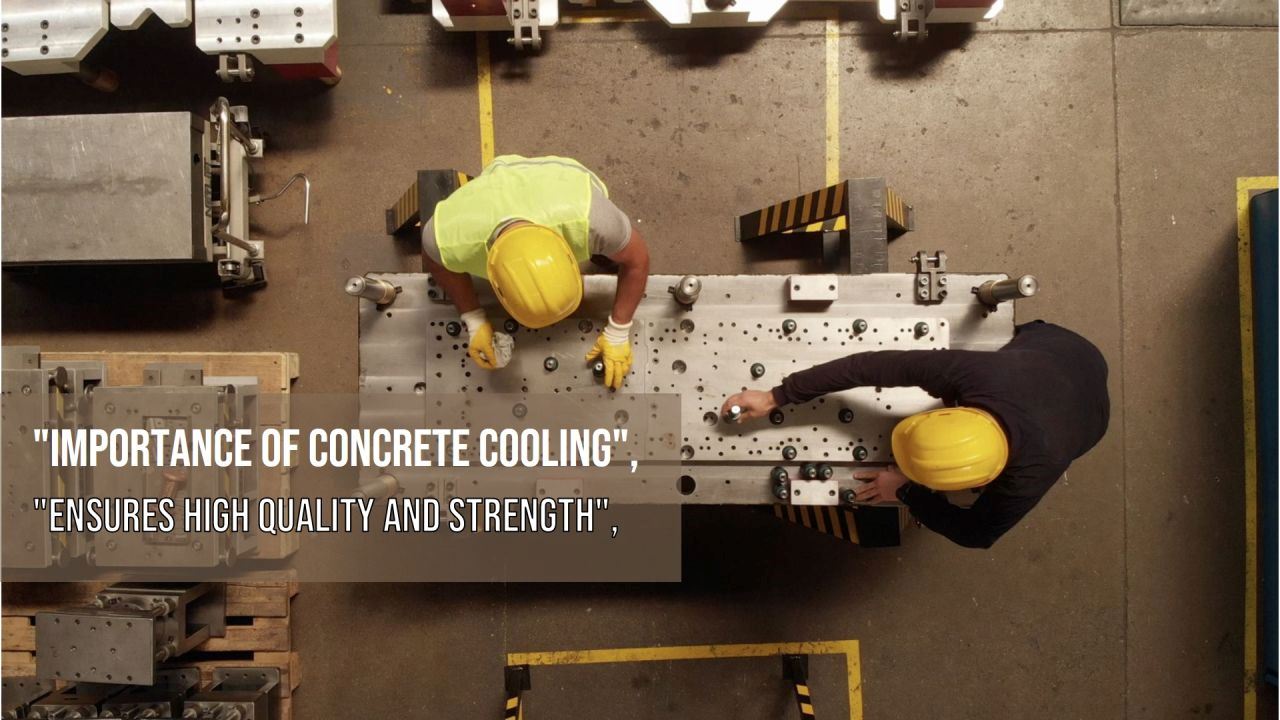Why is Cooling Concrete so important? Rosen Concrete Cooling Solutions informs. Hot weather is the weather in the period when the average temperature is more than 30°C for three days in the pouring of concrete (TS 1248) and in general in most regions in our country, the temperature averages are above 30°C. In normal weather, the concrete casting temperature is defined as +5°C to +30°C (TS 1247). The fresh concrete temperature at the time of delivery can be determined between the user and the manufacturer (TS EN 206-1). The fresh concrete temperature at the time of delivery is estimated as +5°C. The optimum concrete casting temperature can be accepted as 10°C - 15°C. Effects of Hot Air on Fresh Concrete Hot weather conditions must be considered not only as air temperature but also as a combination of ambient and concrete temperature, humidity, wind speed, and solar radiation. The evaporation of water affects the high-temperature wind and the relative humidity naturally has a great effect on the process of casting and the waiting process of the mixed process to the quality of the fresh concrete of the temperature. This is due to the increased risk of water, the loss of consistency, the risk of thermal cracking, the risk of forming plastic shrinkage cracks, and the risk of cold joint formation, while the durability and durability due to cracks, durability, and 28-day durations decrease. Due to color difference and cold joint, a non-aesthetic image is formed and permeability may increase. Concrete Temperature - Thickness Relationship It is ideal for the concrete temperature to be between 15°C and 20°C, but this is not always the case. The concrete temperature should be at least 5°C according to TS EN 206-1 standard. It is ideal that the concrete temperature does not exceed 32°C (ASTM C 94) even if this standard is not an upper limit. Generally, if the amount of water that evaporates from 1m² of concrete surface in one hour is more than 1kg, necessary precautions should be taken. As a result of the research, it was determined that the 28-day strengths of the concrete samples cured at 38°C for the first 24 hours were lower than -15°C (ACI 306R). Temperature - Resistance Relation There is an inverse relationship between temperature and resistance, ice temperature is one of the main factors that directly interact with the strength of the concrete during casting and waiting. Precautions for Concrete Production The material should be stocked in inappropriate ways. For example, the aggregate should be stocked in the shade or cooled directly. Cement silos should be isolated. Water should be stored in sealed tanks and, if possible, underground. Water Cooling Systems or Ice Plants should be used. Various alternatives are discussed below; https://rosen.com.tr/concrete-cooling-solutions Measures to be Taken in Concrete Casting The concrete temperature must be checked continuously. Excessive vibration should not be made. Casting should be carried out as soon as possible. The finishing process should be done immediately when there is no sweaty water on the surface. Concrete casting is carried out at the lowest possible temperatures during the day.

